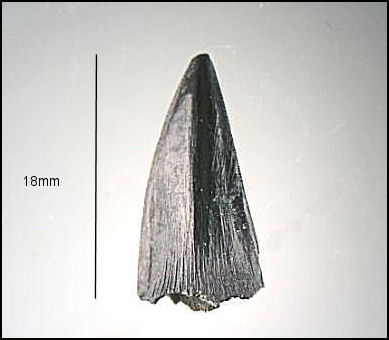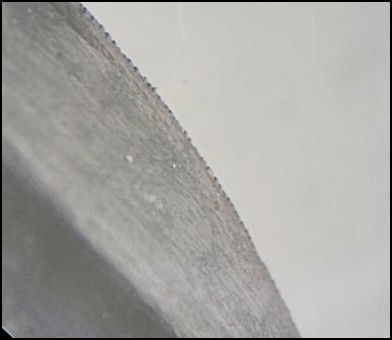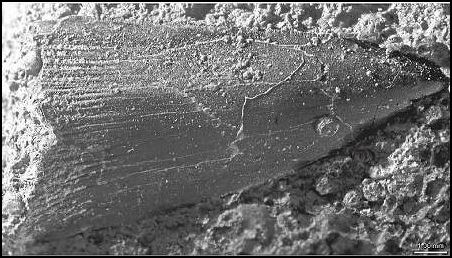|
Finally Identified |
|
February, 2010 I have a habit of tossing questionable items into a bag or container for closer examination later on. For the most part these things turn out to be just junk, every once in a great while I get a hit. In this particular case what appeared to be a small broken shark tooth in the field ended up being something I had never seen before. I emailed some pictures around and the general consensus was fish, possibly Enchodus? While I was able to locate a second specimen╣, this one was also an unknown. This tooth remained unidentified for over a year until the topic came up again in a conversation with a friend about the Inversand Mine, in Sewell, NJ. With a renewed interest I forwarded the pictures to Dave Parris and Jason Schein at the New Jersey State Museum and within a day had my answer along with some very interesting comments. "Our NJSM 14001, an Enchodus
cf. ferox, has a very
similar lateral tooth.
The second specimen I located was identified only as fish.
A special thanks to Dave Parris and Jason Schein at the NJ State Museum for taking the time to make this identification and for putting up with all my follow up questions.
╣Landman, N.H., Johnson, R.O., Garb, M.P., and Edwards,
L.E., and Kyte, F.T., 2007, Cephalopods from the Cretaceous/Tertiary
boundary interval on the Atlantic Coastal Plain, with a description of
the highest ammonite zones in North America, Part III, Manasquan River
Basin, Monmouth County, New Jersey: Bulletin of the American Museum of
Natural History, No. 303, 122 p. |



